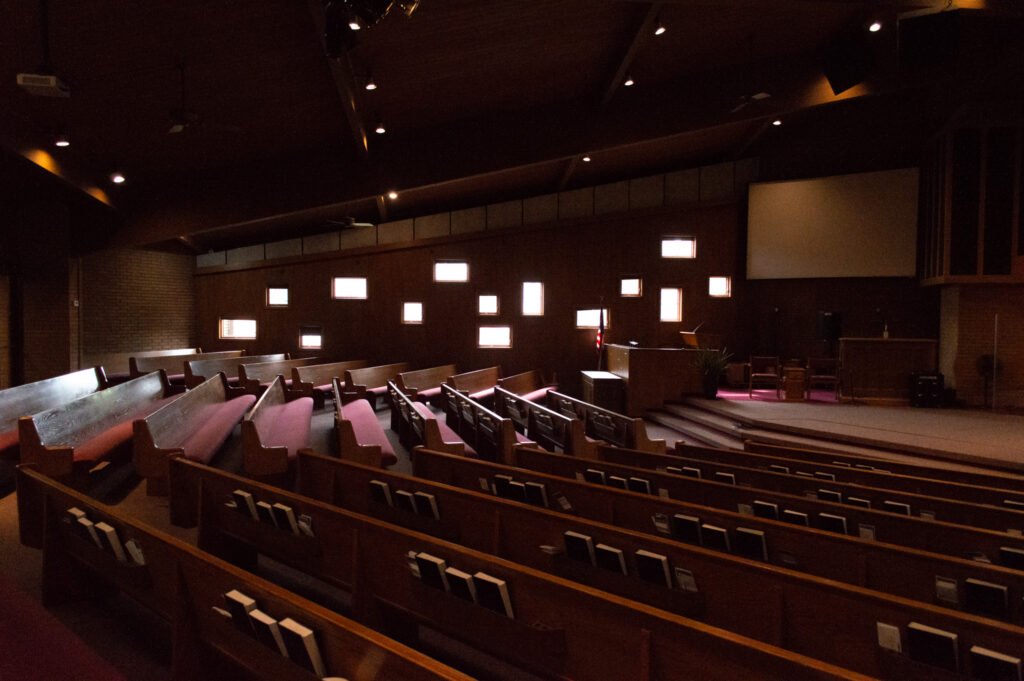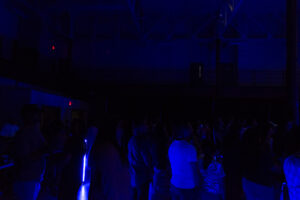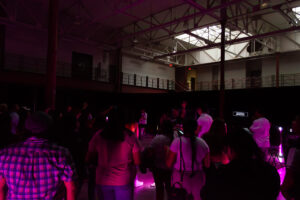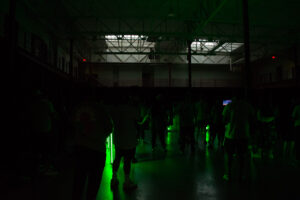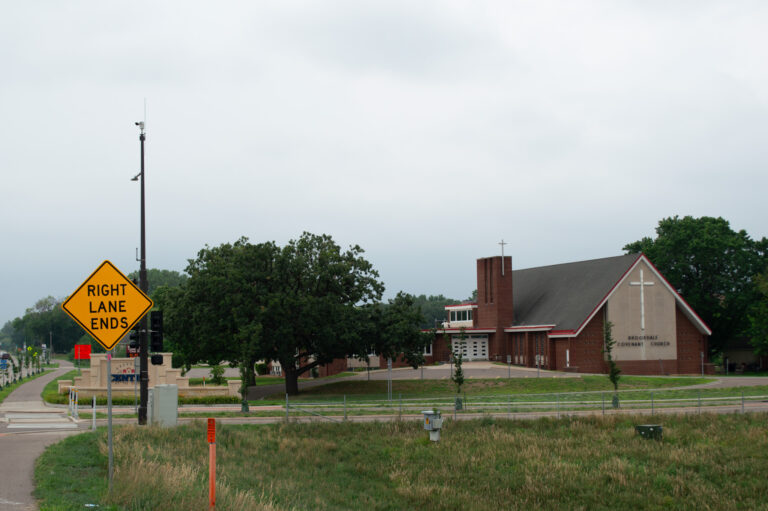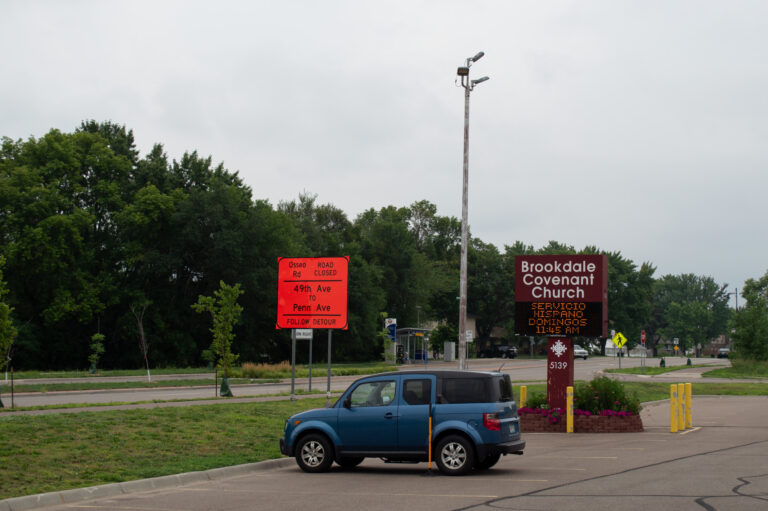Twin Cities
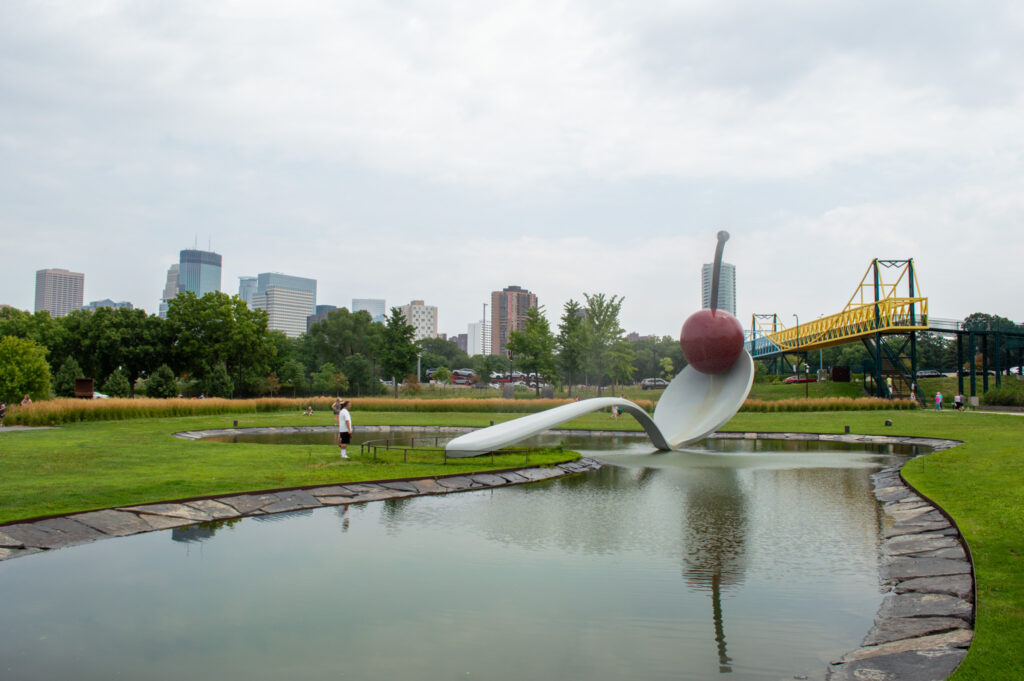
I mix up the dates and arrive a day early in the Twin Cities. Tired, hungry, and I just want to go home. I missed my girlfriend, my little apartment, and even my job at the hotel. Leaving Chicago, my friends, and the familiarity of the city is always sad. Knowing that my own carelessness had cost me an extra day with everyone in Chicago made it sting even more. So I sit in a park drinking gatorade as the sun sets. My sister gives me the number of an old friend, Santiago, who graciously lets me sleep on his couch. I thought he lived in Minneapolis only a stone’s throw from the park I was sitting in. To my surprise, he picks me up and takes me to his home in Brooklyn Park. His wife is asleep, but Santiago offers me food, shelter, and a place to brush my teeth. I cannot stress how much peace, comfort, and joy this brought me.
My plans for Minneapolis had failed to materialize, and my energy and morale was sapped by this point. I’d spent most of my childhood in Minnesota, so it didn’t have the exotic flair that drove me to wander around the other places I’d visited. My friend Emma had put me in contact with a friend of her mom who suggested I reach out to some local Latino pastors. I quickly realized that the list consisted almost entirely of names I’d known as a child when my dad was a pastor here. I felt weird reaching out to people who knew my parents, so I text the only name that is unfamiliar. The pastor, Pastora Betty, responds and invites me to church on Sunday. Santiago then also invites me to a Friday night service that would be shall-we-say more hip than the churches headed by our parents’ generation. Supposedly, it’s in a warehouse. I am a fan of warehouse activities, so I’m in. I also decide to visit La Bendicion, Santiago’s father’s church that my family used to attend in Brooklyn Park.
Having learned a lesson back in Detroit, where a combination of stormy weather and lack of walkability had more or less stranded me over the course of three days, I rented a car. I drive and visit my grandmother. She chose to stay back when my family headed west to California for reasons known only to her. This is the last time I see her. I visit my childhood friend, Cesar. We walk around Maple Grove and try to catch each other up on the past seven years. He has tattoos and likes raves. I drive to the church my dad planted in Monticello, the congregation formerly known as Nueva Vida. It looks the same, but it’s no longer an Evangelical Covenant Church. The playground outside seems smaller and I’d forgotten that the window mullions were made to look like three crosses. I visit the first house my parents bought, consequently also the first house they lost. The legend among the kids in this neighborhood was that Troy Marquette, the guy at the top of the block for whom the street was named, had gone crazy one day and tried to assassinate a Canadian priest. True? Who knows. I just remember riding bikes, catching grasshoppers, and nerf fights. I drive by my elementary school and then by my middle school. I think of my teachers, Mrs. Nygaard, Mrs. Boras, Mr. Hermerding, Mrs. Johnson, Mr. Clark, and so forth. There is zero chance I’d be here, in grad school, on a research trip funded by the University of California Berkeley, if it weren’t for these teachers. They saw a chubby Mexican kid who liked to read, draw, and write stories, and they nurtured his curiosity. For this I am grateful.
Friday night rolls around and I pull up to Minneapolis’s Arts District, parking on a block full of renovated warehouses that today serve as galleries, studios, theaters, and microbreweries. This entire neighborhood is lined with converted industrial buildings along the mighty Mississippi River. On this muggy Friday night, the streets are all abandoned save for one entrance. Well-dressed people stand outside a large brick building drinking open cups of Dunkin Donuts coffee. Free coffee denotes the presence of Protestantism, so I know I am in the right place.
This building was previously known as the Grain Belt Bottling House, today called the Grain Belt Studios. Aptly named, artist studios line the periphery of a huge atrium lit only by a few skylights and wands of bright LEDs cycling through colors. A series of instruments, music stands, and a large tub filled with water are washed in electronic pink, green, and blue light. A large black cloth portions off about three fourths of the atrium’s floor space, creating a clear delineation between the church and the warehouse.
I meet up with Santiago and his brother Jose (1). They stand around talking with the rest of the worship band musicians, mainly first generation Latinos who also grew up going to church. I haven’t been to church regularly since before the pandemic, and have no idea what the state of Contemporary Christian Music is. The band starts playing and I quickly find out. I turn up the ISO on my camera and start taking photos, noticing a young woman doing the same (I see her photos later on the church’s Instagram page; they are better than mine). Young people worship in the glow of the colored LEDs, raising their hands in worship to songs I have never heard. I go up the staircase at the corner of the courtyard to take some photos. Up on the walkway encircling the atrium I become very aware that the church is only a small part of this building. The black cloth wall contains a world unto its own.
Pastor Marvin prays between songs in a mixture of Spanish and English, which the multicultural crowd seems to all understand with no problem. He gives a sermon and then invites a handful of congregants to come up to the front. They form a line behind the large tub filled with water, ready to be reborn in the name of the Father, Son, and Holy Spirit. The service ends with more music, and then fellowship.
1: Jose taught me bass back when I was in middle school. He gave me the bass strap his teacher had given him, which I eventually gave to my little brother. It has purple lightning bolts on it.
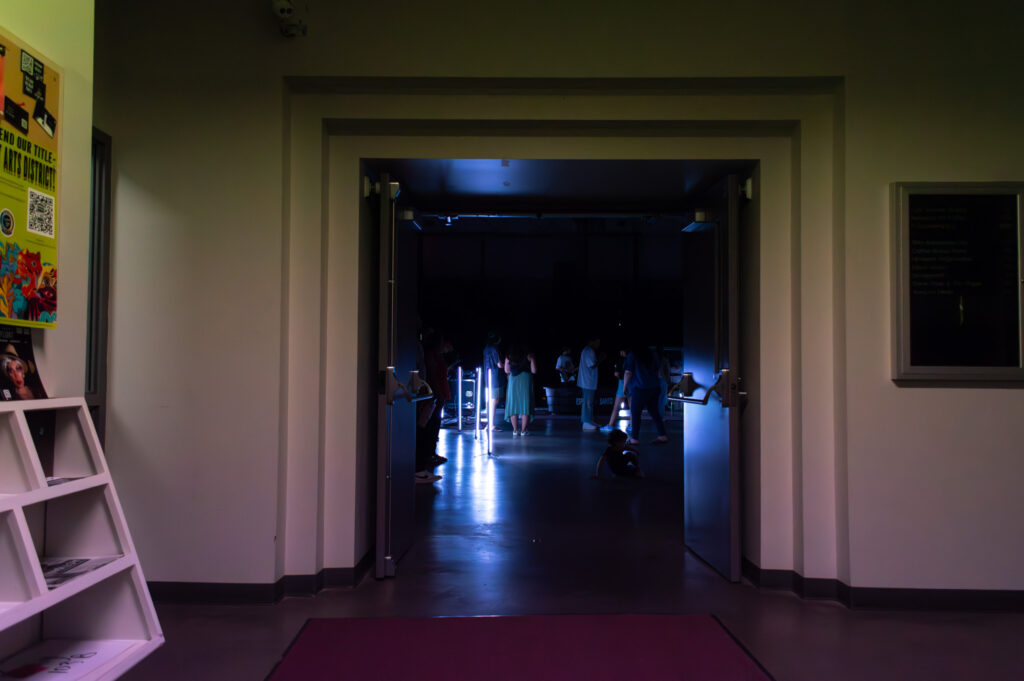
The following Sunday morning, I take a long bus ride to Brooklyn Center. I am scheduled to meet with Pastora Betty Reyes, the woman at the helm of a new church alongside her husband Hector. Her congregation meets in a standard protestant church building just off the freeway. They are sandwiched in the time slot between the morning English service and afternoon Laotian service. I arrive before the service begins and meet Hector, who tells me that Pastora Betty is busy getting everything ready. He leads me to her and she is indeed very busy, shaking my hand with a smile before attending to other matters. Similar to Espiritu Santo, today is a day of baptisms, which means that logistical considerations are heightened. The interior of the church, known Anglically as Brookdale Covenant Church, is comprised of a steepled sanctuary with stained glass windows of varying colors on either side. The congregation is small, but begins flowing in as the musicians on stage practice. Betty and Hector are on the younger side of my parents’ generation, so the worship service contains some tunes I remember from childhood. Most of the worship musicians are from another church, helping out at Nuestra Esperanza while they grow and can sustain their own grupo de alabanza.
After the service, I wait until Pastora Betty has a moment. The baptismal is in the basement, next to the kitchen which has gradually become a potluck. I sit next to a man and try to make small talk, unintentionally insulting him (I ask where he’s from, Mexico City, oh so you are chilango, silent pause, no–that is a word for people who move to el DF from other cities, silent pause). Pastora Betty sits down and saves me, perhaps the fifth person to tell me that I should get some food. The story of how we are here in a basement in Brooklyn Center, Minnesota on a rainy summer day begins to unfold. In 2015, a group began to meet in a house basement. This group called themselves Comunidad Cristiana Nuestra Esperanza and spent two years meeting here domus ecclesiae style. From here they moved to a handful of different church basements, renting space wherever possible. As they looked for a permanent home, they ran into some churches who would not rent to them owing to their migratory status. Eventually, the Covenant Evangelical Church adopted the congregation, christening them Nuestra Esperanza. The denomination told them of three churches in the suburbs who were open to hosting them. Pastora Betty and the rest of the congregation prayed and decided on Brookdale Covenant Church, a relationship which has proved mutually beneficial over the years.
Nuestra Esperanza has no limits on the space they are allowed to use for the church. They also aren’t asked to pay rent, which is perhaps one of the greatest blessings they have come upon. This is one of my great fascinations with how immigrant churches function, one of the reasons I did this project in the first place. These are some of the only spaces where the rules of the market are not central to the appropriation of land. Where else would a landlord let people stay for free? Sure, not all churches are so hospitable, but I’m willing to bet you’d find these stories in any city throughout this fine republic.
Pastora Betty also tells me about the plans the church has for the future. The church is looking to partially serve as a community center, opening up their doors to non-religious groups who could also help serve the community. In particular, she is looking to get input from the Latino community to address the needs of her congregation and beyond. She lists a clinic, English classes, and other similar programming which any architecture student has likely encountered in their studies. I am hopeful for this endeavor.
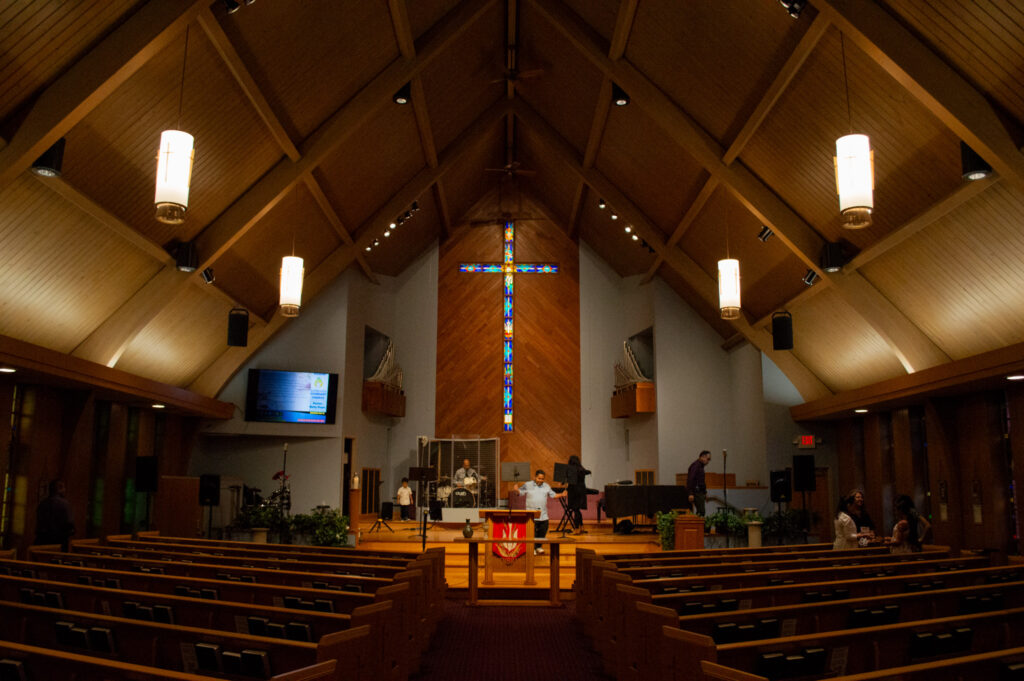
I leave before the baptisms begin, thanking Pastora Betty as I wonder how the heck I am going to get to Brooklyn Park in the rain. I remember that I am in the Land of the Free, so I get an Uber. It is a short ride over to La Bendicion, the Spanish sister of Redeemer Covenant. In the decade or so I have been gone, an architectural overhaul of the church occurred. It is much better today–the cramped halls of my youth illicit nothing but a sense of claustrophobia. I eventually find the door and sit toward the front. The sanctuary itself is virtually the same, a room like the open mouth of a whale with small rectangular holes punched out at irregular intervals along the walls. I see what I think are some familiar faces among the congregation, now older.
Once the service is over, I approach a man I did not think I would see today, or really ever again. I introduce myself to make sure it is him, and he is surprised that I am no longer a chubby twelve year old. We walk over to his wife who was my Sunday school teacher as a kid and are joined by his children, all in their twenties and thirties by now. We talk and remember the old days when we all attended Nueva Vida, now shuttered for well over a decade. I explain why I am there and they are quick to let me know about different churches and synagogues in Los Angeles I should try to visit. We spend a good amount of time catching up, and then head our separate ways. Santiago gives me a ride to a friend’s apartment back in Minneapolis, and we too say our goodbyes. The sun sets quietly behind a sea of grey clouds, and I pack my bag for tomorrow’s flight.
